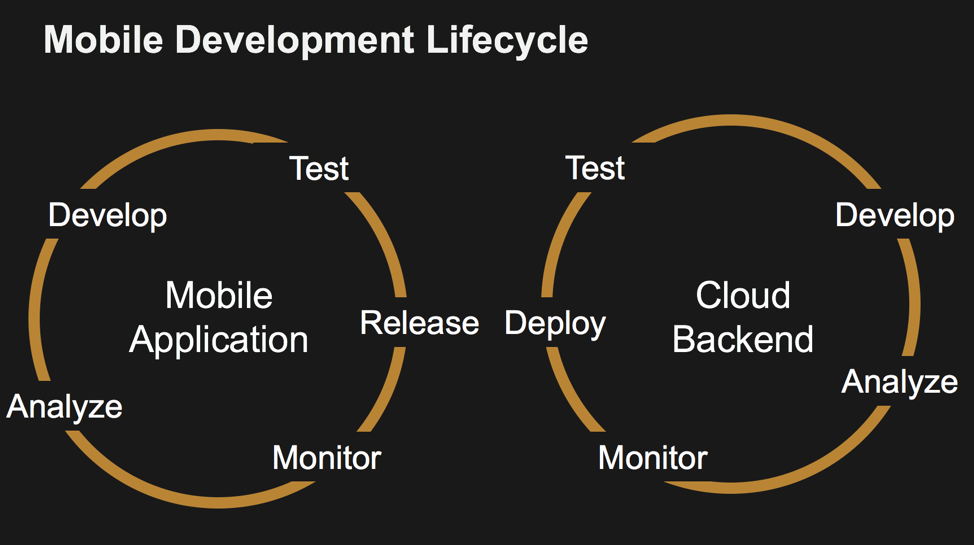Balance In Mobile App Design
The mobile architecture is the most important part of mobile app development. It can lead to the success or failure of the mobile app. In this article, you will learn about the key components of application architecture and factors to consider when designing an app.
What is Mobile App Architecture?
Mobile app architecture is a set of structural elements along with their interfaces that compose the system. It includes some techniques which help one in developing a mobile application. The app architecture gets formulated by taking all procedure that works on mobiles. This set of system helps to avoid customer problems.

Application Architecture
The building or developing application architecture acts as a road map. You can follow this road map for best practices. You can make a well-structured app. All you need is the help of app architecture and software design patterns.
You need to prepare a mobile app by keeping a company's standards or industry in mind. This practice can avoid future problems. The problems may lead to recreating many features of the app again. Keeping care of every problem while creating application architecture, gives high-quality results.
The quality determines the whole work of the mobile application. Missing an important element during app architecture development can endanger your project's success. The size of the application decides the complexity of the process. The process is building high-quality architecture.
Mobile App Architecture Design

The most popular multilayer architecture is the three-layer architecture. This three-layer architecture is important for designing or creating mobile app architecture. It refers to your component's internal architecture. The given are the main three important layers of mobile architecture design:
Presentation Layer
The presentation layer consists of two components. These two components include the User Interface and UI process. While discussing this layer, the primary focus is the end user's mobile application's presentation. The mobile application developers should look for a client type. So, it would be compliant with the infrastructure.
During the presentation layer stage, you need to decide on many important things. These include themes, fonts, colours and shadings. The developer should keep in mind the client's deployment restriction while mobile app architecture designs. Another important necessity of this layer is to select the correct data format. Then use robust data validation mechanisms.
Business Layer
The business layer is for the elements on the business front. This layer looks at how the app will present the business to the end-users. This layer includes business components, workflow, and entities. These layers' complexity is more complex than others. It concerns too many problems such as caching and logging. The exception management and security challenges also add to its complexity.
There are two parts of this layer to reduce the complexity. These include the service layer and domain model. The service layers are for common application function sets. While the domain model is for knowledge and expertise linked to specific problems.
Data Access Layer
The data access layers are to meet the application needs. They offer efficient and secure data transactions. For this purpose, a developer needs to design this layer. It combines different parts including data utilities, data access components, and service agents.
The selection of the correct data format is important. Also, having a strong validation technique is another factor that makes it important to design this layer. Mobile app developers should consider the maintenance of the data. This practice helps in keeping this layer changeable with the business requirements.
Factors to Consider During Mobile App Development Architecture
It is important to build a better application architecture as it can get you success. You need to keep the details of mistakes during mobile app development architecture. This practice can lead you to success. If you avoid the problems and don't consider the factors, your app can be a failure. The following includes the things you need to consider while developing the architecture:
Determining the Device Type

Determining the device type is another important factor. There are different categories of smartphones that you need to determine and consider. The operating system decides the type of smartphones. There are various android phones, iPhones and many others.
They are based on the operating system they use. Besides the category or type of device, you should consider many other things. Other things include screen size, resolution, and CPU characteristics. Furthermore, you should also consider storage capacity and availability of development tool framework.
Bandwidth Scenarios
Your target audience's bandwidth scenarios are important to consider. There can be times when there will be zero connectivity. While creating a mobile app the targets audience internet network is an important factor. If your app is slow on the users' internet, they would abandon the app. This state would not be good for your business.
You need to consider the account power consumption, design access mechanism, and speed. Furthermore, choose the best software protocols and hardware for your mobile app. There are many things you need to consider. You need to adjust all these things for a slow and intermittent internet connection.
User Interface
For a mobile application, a great user interface plays an important part. A great user interface makes it easy and comfortable for users to interact with the app. The application interface should be simple and creative. It should not confuse or mislead users. The more, the simpler and creative it would be, the evolving the connection between your app and users. You should use a creative interface according to the demand of your target audience.
The Right Navigation Method
Choosing the right navigation method is important and crucial. It is an important aspect of mobile app development. The navigation method should be according to the app requirements and customers' preferences. Choosing the best fit after analyzing different navigations methods can lead to success. Some of the popular navigation methods include:
Stacked Navigation Bar
In this navigation bar, there's the design of a fixed bar. You put their links to all other elements within your mobile app.
Tab Controller
With the tab controller, one can switch between the groups of tabs with links
Modal Controller
There's a screen menu in the modal controller. It allows switching between tabs and links.
Single view
In this method, there's a screen with one element and an option to go back.
Gesture-Based Navigation
It encourages us to use finger combinations. With this method, the user can interact with the Home button to cause an action on the screen.
Real-Time Updates vs. Push Notifications
You should also decide whether you want to create a real-time update or push button. You can decide this factor by keeping your audience in mind. The real-time update can be expensive but is a compelling feature.
Summary
The mobile app architecture is the backbone of any mobile app. The plan for mobile architecture provides a guideline. You need to follow these guidelines during the development process. It offers user experience, functionalities, and features.
Designing mobile app architecture is an important step. This step helps in taking your business to the path of success. Before starting the development process, one should complete the creation of mobile architecture.
Balance In Mobile App Design
Source: https://os-system.com/blog/mobile-app-architecture-how-to-design-it/
Posted by: sullivanwhinged.blogspot.com

0 Response to "Balance In Mobile App Design"
Post a Comment